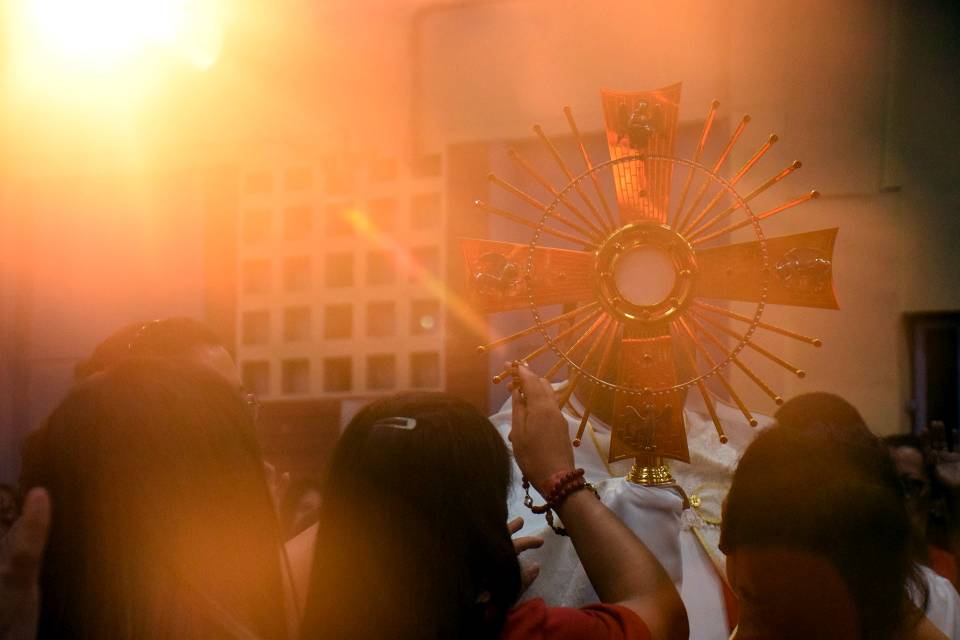 Photo by Erica Viana on Unsplash
Photo by Erica Viana on Unsplash
The Holy Eucharist (Part 2)
4. When did Jesus institute the Holy Eucharist?
Jesus instituted the Holy Eucharist on the night before He suffered and died.
The institution of the Holy Eucharist is commemorated on Holy Thursday. The greatest Memorial of our Lord’s Eucharist after Holy Thursday is Eater Sunday, the day after Christ’s Resurrection from the dead. The Solemnity of Corpus Christi also celebrates this institution.
5. How did Jesus institute the Holy Eucharist?
Jesus took bread, blessed it, broke it, gave it to his disciples and said: “Take this, all of you, and eat it; this is my body which will be given up for you.”
In the same way Jesus took the cup, blessed it, gave it to his disciples and said “Take this, all of you, and drink from it; this is the cup of my blood, the blood of the new and everlasting covenant. It will be shed for you and for all men so that sins may be forgiven. Do this in memory of me.”
6. What happened when Jesus spoke the words: “This is my body, this is my blood”?
When Jesus spoke the words: “This is my body, this is my blood,” He changed the bread into His sacred body and wine into His precious blood.
7. What power did Jesus confer upon the Apostles with the words: “Do this in memory of me”?
With the words: “Do this in memory of me,” Jesus conferred upon the Apostles the power also to change the bread into His sacred body and wine into His precious blood.
8. To whom was the power to change bread and wine handed on?
The power to change bread and wine was handed onto the bishops and priests.
9. When do bishops and priests exercise this power?
Bishops and priests exercise the power to change bread and wine at the Consecration of the Holy Mass.
However, when bishops and priests consecrate, they do not act in their own name but with the power of Christ. Because the consecration takes place on the altar, the Holy Eucharist is also called the “Sacrament of the Altar.”
10. How do we know that Jesus is truly present in the Holy Eucharist?
That Jesus is truly present in the Holy Eucharist we know
- From the words by which Jesus promised and instituted this Sacraments;
- From the teaching of the Apostle Paul and the Church.
11. “Since Christ himself said: ‘This is my body, who may doubt it?
Since He plainly said: ’This is my Blood,’ who may question or think it is not so? Once He changed water into wine. Can he not change wine into blood?’ (St. Cyril of Jerusalem, d. 386).
12. In his discourse on the Bread of Life Jesus contrasts His bread with the manna that the Israelites ate in the wilderness. They ate yet died. His bread gives eternal life.
13. What does the Apostle Paul teach about the Holy Eucharist?
The Apostle Paul teaches: “Is not the cup of blessing we bless a sharing in the blood of Christ? And is not the bread we break a sharing in the body of Christ?”
14. The Church teaches what she has always taught, from the time of the Apostles to the present day: that in the Holy Eucharist Jesus Christ is truly Present, actually, uniquely, God and Man, whole and entire.
“We are taught that this consecrated food is the Flesh and Blood of the incarnate Son of God” (St. Justin, d. 166). – “ What seems bread is not bread, though it taste so, but is the Body of Christ; seems wine is not wine, though it seem so to the taste, but it is the Blood of Christ” (St. Cyrill of Jerusalem, d. 386). – “Christ was holding Himself in His own hands as He held out His sacred Body and said: “This is My Body” (St. Augustine, d. 430).
15. All Eastern Churches who separated from the Catholic Church maintain belief in the Real Presence of Christ in the Holy Eucharist.
16. Under what appearances is Jesus Christ present in the Holy Eucharist?
Jesus Christ is present in the Holy Eucharist under the appearances of bread and wine, which are the outward signs of this sacrament.
Jesus chose bread and wine as the outward signs of this Sacrament because bread and wine best symbolize the inward grace of the Sacrament.
17. What is meant by the “Appearances of bread and wine”?
By the “appearances of bread and wine” means what the senses perceive: form, color, taste, and smell of bread and wine. Jesus Christ veils Himself from our senses,
- So that we may approach this holy Sacrament with childlike trust;
- So that through firm faith in His presence we may gain much merit: “Blest are they who have not seem and have believed” (Jn 20:29).
18. Is only the Body of Christ present under the form of bread, and only the Blood of Christ under the form of wine?
No, both the Body and the Blood are present under each form, i.e., both are present under the appearances of bread, and both are present under the appearances of wine.
The Jesus who is present in the Holy Eucharist is not dead but living. Therefore He is present whole and entire in each of the outward signs (appearances of bread and wine), present in each with flesh and blood, with body and soul, and as God and Man.
As the human soul is totally present in every part of the human body, so Jesus is totally present in the least particle of the consecrated host and in the least drop of the consecrated chalice.
Only the bread (the host), not the unseen Christ it contains, can be broken or divided.


No Comments